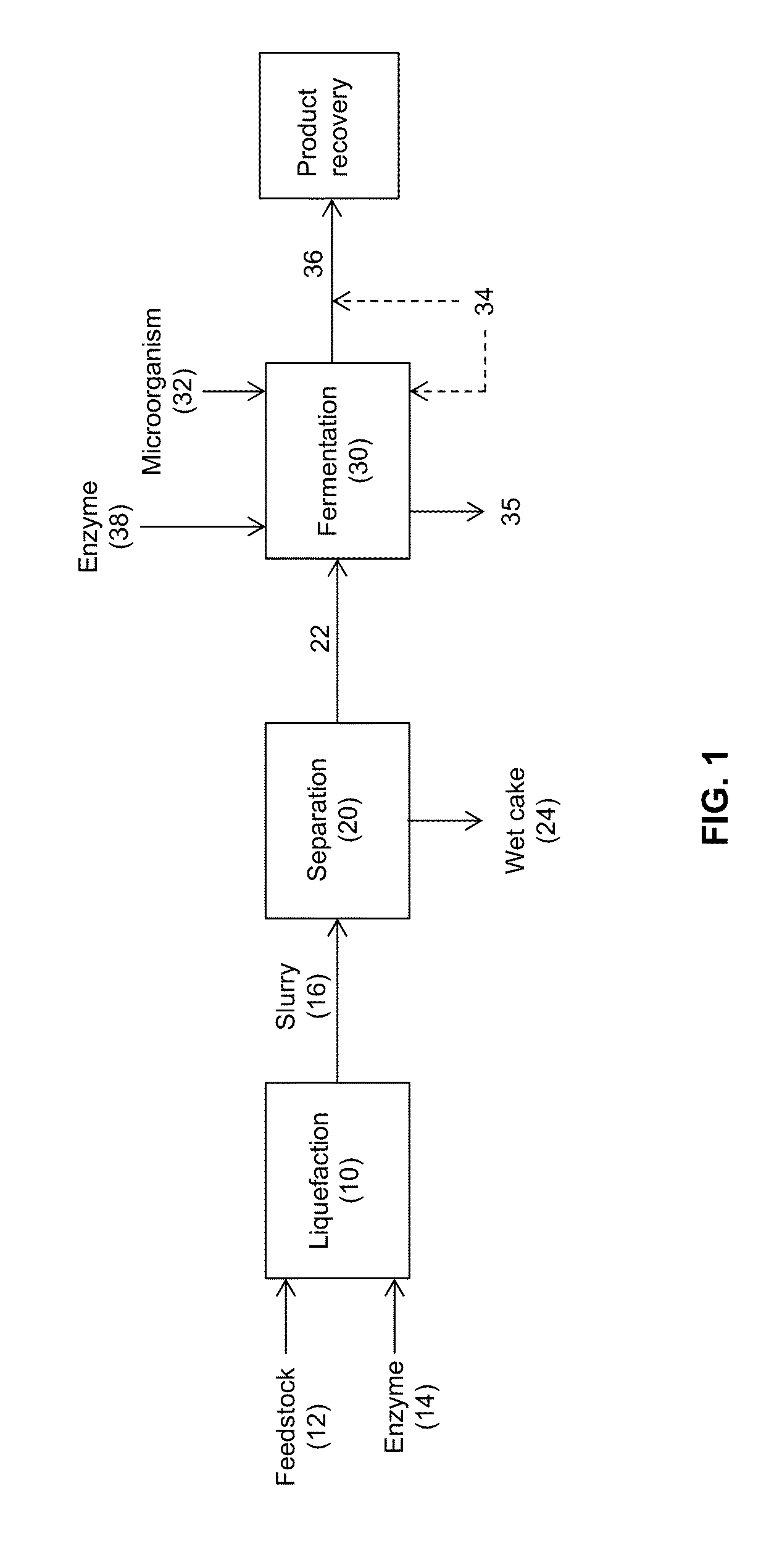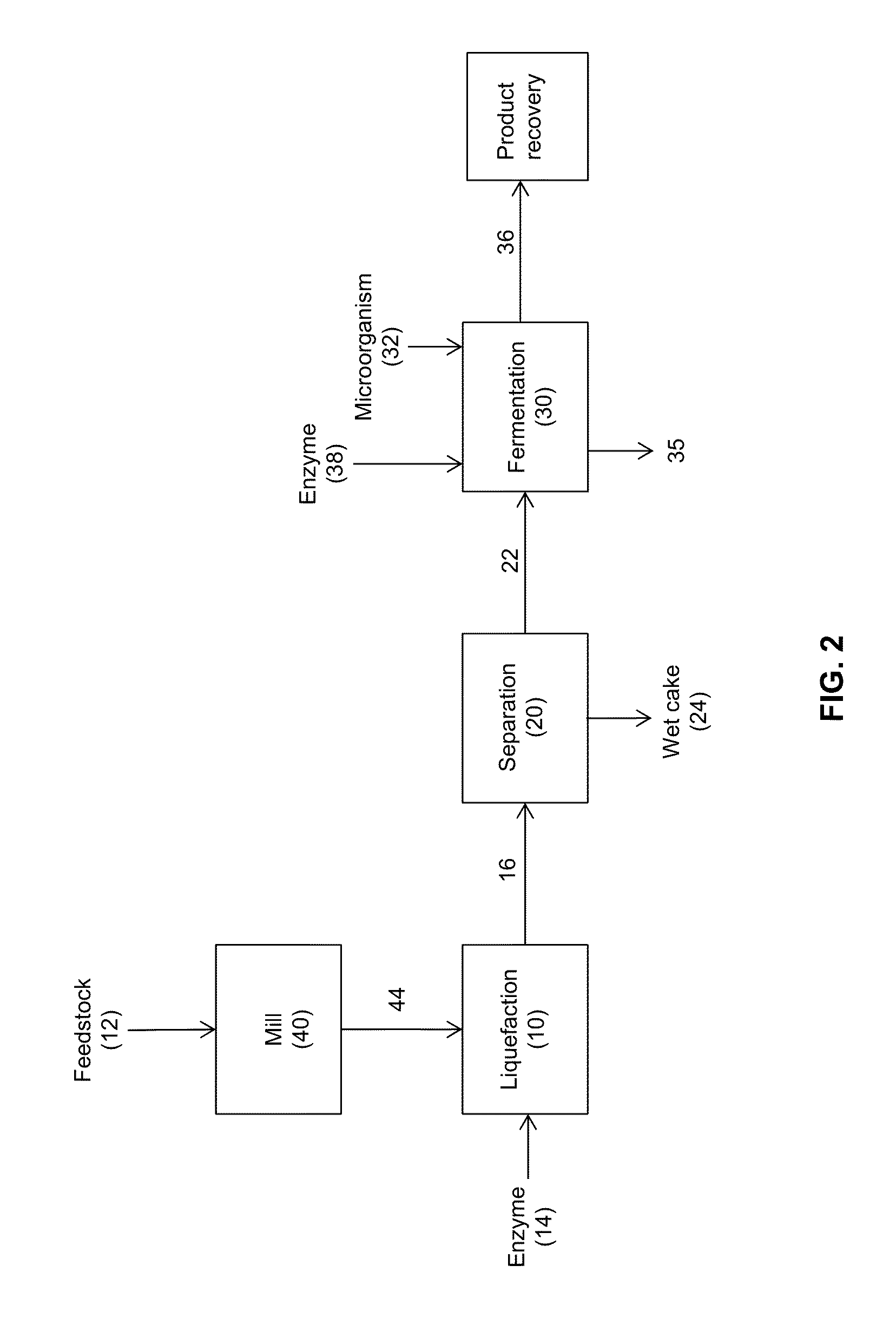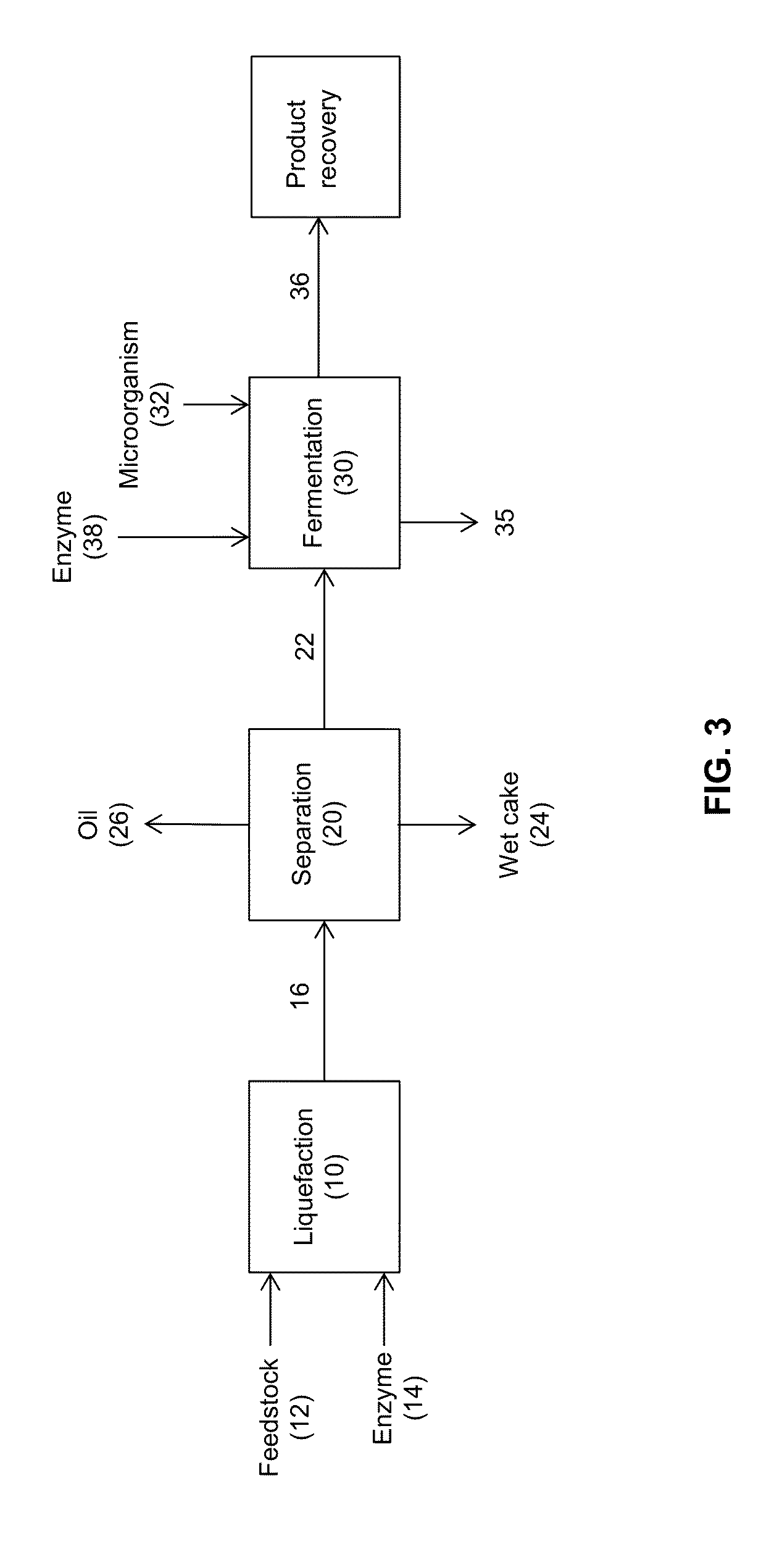Processes and systems for the production of fermentation products
- Summary
- Abstract
- Description
- Claims
- Application Information
AI Technical Summary
Benefits of technology
Problems solved by technology
Method used
Image
Examples
example 1
Effect of Undissolved Solids on the Rate of Mass Transfer
[0344]The following experiment was performed to measure the effect of undissolved solids on the rate of mass transfer of i-BuOH from an aqueous phase that simulates the composition of a fermentation broth derived from corn mash, which is approximately half way through a simultaneous saccharification and fermentation (SSF) fermentation (i.e., about 50% conversion of the oligosaccharides) in order to mimic the average composition of the liquid phase for an SSF batch.
[0345]Approximately 100 kg of liquefied corn mash was prepared in three equivalent batches using a 30 L glass, jacketed resin kettle. The kettle was set up with mechanical agitation, temperature control, and pH control. The protocol used for the three batches was as follows: (a) mixing ground corn with tap water (30 wt % corn on a dry basis), (b) heating the slurry to 55° C. while agitating, (c) adjusting pH of the slurry to 5.8 with either NaOH or H2SO4, (d) adding ...
example 2
Effect of Removing Undissolved Solids on Phase Separation Between an Aqueous Phase and a Solvent Phase
[0367]This example illustrates improved phase separation between an aqueous solution of oligosaccharides derived from liquefied corn mash from which undissolved solids have been removed and a solvent phase as compared to an aqueous solution of oligosaccharides derived from liquefied corn mash from which no undissolved solids have been removed and the same solvent. Both systems contained i-BuOH. Adequate separation of the solvent phase from the aqueous phase is important for liquid-liquid extraction to be a viable separation method for practicing ISPR.
[0368]Approximately 900 g of liquefied corn mash was prepared in a 1 L glass, jacketed resin kettle. The kettle was set up with mechanical agitation, temperature control, and pH control. The following protocol was used: mixed ground corn with tap water (26 wt % corn on a dry basis), heated the slurry to 55° C. while agitating, adjusted ...
example 3
Effect of Removing Undissolved Solids on the Loss of ISPR Extraction Solvent—Disk Stack Centrifuge
[0382]This example demonstrates the potential for reducing solvent losses via DDGS generated by the extractive fermentation process by removing undissolved solids from the corn mash prior to fermentation using a semi-continuous disk-stack centrifuge.
[0383]Approximately 216 kg liquefied corn mash was prepared in a jacketed stainless steel reactor. The reactor was set up with mechanical agitation, temperature control, and pH control. The protocol used was as follows: mixed ground corn with tap water (25 wt % corn on a dry basis), heated the slurry to 55° C. while agitating at 400 rpm, adjusted pH to 5.8 with either NaOH or H2SO4, added alpha-amylase (0.02 wt % on a dry corn basis), continued heating to 85° C., adjusted pH to 5.8, held at 85° C. for 30 min while maintaining pH at 5.8, heated to 121° C. using live steam injection, held at 121° C. for 30 min to simulate a jet cooker, cooled ...
PUM
| Property | Measurement | Unit |
|---|---|---|
| Percent by mass | aaaaa | aaaaa |
| Weight | aaaaa | aaaaa |
| Flow rate | aaaaa | aaaaa |
Abstract
Description
Claims
Application Information
 Login to View More
Login to View More - R&D
- Intellectual Property
- Life Sciences
- Materials
- Tech Scout
- Unparalleled Data Quality
- Higher Quality Content
- 60% Fewer Hallucinations
Browse by: Latest US Patents, China's latest patents, Technical Efficacy Thesaurus, Application Domain, Technology Topic, Popular Technical Reports.
© 2025 PatSnap. All rights reserved.Legal|Privacy policy|Modern Slavery Act Transparency Statement|Sitemap|About US| Contact US: help@patsnap.com



